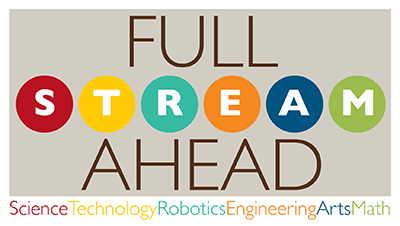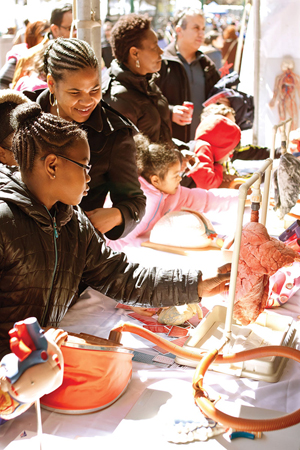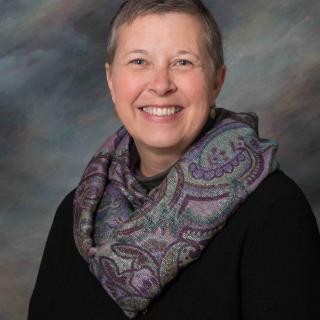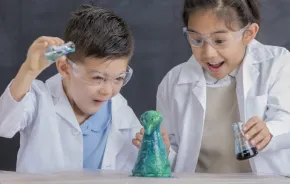
 In 1931, students from Long Island’s Newton High School won first place in the American Institute’s Children’s Science Fair. Their project: “The Work of a Tree.” The exhibit featured a diorama of a large dogwood tree divided into four seasons. Each seasonal section showed a part of the tree’s life cycle.
In 1931, students from Long Island’s Newton High School won first place in the American Institute’s Children’s Science Fair. Their project: “The Work of a Tree.” The exhibit featured a diorama of a large dogwood tree divided into four seasons. Each seasonal section showed a part of the tree’s life cycle.
Eighty-five years later, teenager Naveena Bontha of Hanford High School in Richland, Washington, won top prizes in three of the world’s largest science fairs: the Regeneron Science Talent Search, the 2016 Siemens Competition in Math, Science and Technology, and the Intel International Science and Engineering Fair. Her project: to improve the energy efficiency of buildings. She created inexpensive coatings that acted like sunglasses for windows, reducing energy loss while also blocking infrared light.
What a difference 85 years makes.
Let’s go to the fair
An estimated 10 million students in the United States participate in science fairs every year, according to Kenneth Hess, CEO of Science Buddies, a nonprofit that provides online science learning tools, including science fair project ideas. Unfortunately, 10 million is a mere 5.5 percent of our nation’s 54.8 million K–12 students, which might explain why science fairs are “lagging,” as The New York Times described it in a 2011 article.
Of course, not everyone thinks science fairs are on the way out. Gayle Kansagor, chief communications officer at the Society for Science and the Public, says in her experience, national science fairs are on the upswing.
“We estimate that the number of students in the U.S. and U.S. territories competing in our network of affiliated science fairs is 157,000, with about 65,000 of these students competing at a high school level,” Kansagor says. “Our participation data from the last three years remains steady.”
The society regularly puts on three science competitions: the Regeneron Science Talent Search, the Broadcom MASTERS and the Intel International Science and Engineering Fair.
Of course, tracking participation numbers for such large national and international fairs is much easier than figuring out how many local, regional and state science fairs happen in any given year. For those types of fairs, there’s really no way to get an accurate count, says Hess. Despite their long history in the American education system, very little research has been done on science fairs.
Fairs look very different than they did just a few decades ago, says Sarah Scripps, a professor of history at the University of Wisconsin, Stevens Point. Scripps’ dissertation, “Science Fairs Before Sputnik”, argued that science fairs shaped an adolescent scientific culture that continues to impact us today.
The first science fair was called The Children’s Fair and was held in 1928 at the American Institute in New York City. Its goal: Connect students with nature. Science fairs steadily expanded from there, says Scripps. They began to include diverse scientific topics in physics, engineering, astronomy and biology. By the end of World War II, science fairs had a new purpose: Groom the scientists of the future.
That goal isn’t so different from that of our modern STEM-centric world. Thanks to the influence of STEM (science, technology, engineering, math) and STEAM (the “A” is for arts), science fairs are poised for a resurgence, says Scripps. Adding fuel to the fire is a broader transition at work: We’re changing how we teach science.
Historically, American science teachers have done well teaching children about the multifaceted, ever-changing world of science, says William McComas, Ph.D., a professor of science education at the University of Arkansas and a fellow for the American Association for the Advancement of Science. “But we haven’t done a good job of teaching students how knowledge is acquired in a scientific frame,” he says. “I am a huge advocate for helping students understand how knowledge is acquired in science.”
And what’s a good way for kids to learn how that happens? You guessed it: a science fair.
Students need to learn how science is conducted in the real world, according to the Next Generation Science Standards (NGSS). Created by a team of research experts and through state-led efforts, the NGSS provide a framework that describes how science should be taught in our schools; they treat science not only as a body of knowledge, but as an evidence-based process. With the NGSS as a framework, each state can adopt or adapt the standards for use in its schools.
Because previous standards don’t take into account major advancements in science as they happen, the NGSS marry changing science content to the goal of improving a student’s ability to compete in this world of science and technology. The standards do this by teaching students how to ask questions, conduct investigations, track and analyze data and ultimately design solutions. In other words, they are the same standards by which judges rate projects at a science fair.
But not all states have approved the NGSS, and that means science education standards remain a mixed bag across the country. Research shows that such inconsistency hurts students. In 2012, the Program for International Student Assessment took the educational performance of 15-year-olds in the U.S. and measured it against the international educational systems in 34 other countries. The U.S. ranked 20th for science education.
Teachers, meanwhile, remain skeptical of teaching scientific inquiry, which an authentic practice of science heavily relies upon. A 2015 study by researchers at the University of North Carolina and Belmont Abbey College surveyed 275 middle school and high school science teachers from four North Carolina school districts about their attitudes toward teaching science inquiry. In general, the teachers believed that the inquiry method was “an important effective component of science teaching,” but a majority of the teachers did not teach inquiry.
Why? They felt it took too much time to develop effective lesson plans; they were reluctant to teach inquiry because of classroom size; end-of-year assessments took too much time from classroom learning; and — perhaps most telling — they felt unprepared to teach the inquiry method.
Creating standards such as the NGSS could help even out such inconsistency, but, as of January 2017, only 18 states and the District of Columbia had adopted the NGSS. The good news: Among those adopters is Washington state.
Your local fair
Kate Allender is a science and psychology teacher at Tesla STEM High School in Redmond. Unlike many teachers, including many at Tesla STEM, Allender requires science fair participation for her STEM lab concentration class. She even makes the fair project 15 percent of the grade in her AP psychology course.
To help her students navigate the fair, Allender helps edit research plans and write scientific abstracts; she also sets check-ins throughout the semester. Her students begin researching their topics during the summer and once school starts, they do research at the University of Washington.
Of course, as any parent will tell you, it’s rarely just the student who gets involved in a science fair project. Tiffany Pitts’ kids go to Cascade K-8 Community School, a public STEAM school in Shoreline. The science fair is a big deal at Cascade, says Pitts; every child is expected to participate.
“One year we tested all sorts of materials to see which ones conducted electricity,” Pitts says of her kids’ entries. Last year, her son chose an experiment that he could do on his own (a welcome relief for Pitts). “He found the experiment online and was able to tweak it to his needs without a lot of help,” she says.
 The return of the science fair
The return of the science fair
Students also get a lot of support from teachers, adds Pitts. “Our teachers are really dynamite at walking the kids through all steps,” she says.
Another benefit of the fair: By allowing kids to do this kind of work on their own, they learn that it’s OK to make mistakes, says Sarina Behar Natkin, MSW, a Seattle-based parent coach.
“They have a greater ability to deal with setbacks that will come to them all through life without you having to come and fix it,” she says. Behar Natkin experienced this herself when her sixth-grade daughter recently did a project based on the work of famed inventor Rube Goldberg; students had to come up with their own Goldberg-esque plan. “[My daughter] had an idea and started her own work on it,” says Behar Natkin. “She was very proud and excited about it — and she did it all herself.”
Of course, science fairs can also put us parents in a difficult situation; we don’t want our children to feel overwhelmed or to fail. In such cases, rely on scientific inquiry yourself, advises Behar Natkin. Testing a hypothesis, breaking a project into parts and developing solutions are all valuable lessons whether they relate to science or not.
“I think that science fairs bring the real world to life, instead of just learning it in a book,” she says. “There’s huge value in that.”
But is it enough?
Still, many are concerned that science fairs won’t allow students to learn as much content as a curriculum requires. McComas, however, makes the case for depth rather than breadth. “A science fair is a pageant of expertise,” he says. “I think that you can do the type of coverage that a teacher desires and the curriculum demands while also giving students the chance to learn a massive amount on their own about how science functions.”
Plus, once a student learns the scientific inquiry process, she can apply it elsewhere when learning science, McComas explains. As a science teacher, “You have to keep coming back to the inquiry process, and we have to keep teaching it,” he says.
But if schools are teaching science inconsistently from school to school, the inquiry process suffers. A 2014 case study done at Portland State University demonstrated such inconsistencies.
The study found that 31 percent of students often didn’t fully understand the inquiry process related to their science fair project. They had difficulty writing a research plan, collecting, managing or presenting data or conducting an investigation. In addition, though they found working with coaches and mentors helpful, 34 percent said there was a “lack of support” from teachers, facilitators and coaches during the process.
Julia Betts, author of the case study, says that obviously, there’s still plenty of room to improve when it comes to teaching inquiry-based learning. “I found in examining inquiry-based learning [that] science fair participating was mandatory for some, and voluntary for other students,” says Betts, who is now the STEM center manager at Portland Community College.
Betts would like to see more science fairs and, ideally, a standardized system. Such changes may help address the kinds of concerns students voiced in her case study. “Science fairs carry immense potential for supporting successful inquiry-based learning in alignment with the NGSS,” she says.
McComas agrees. He strongly believes that the science fair experience is something that should be required for all students. “We want all learners to understand the pageant of science, its process and rules of science. . . . That is why the science fair is irreplaceable.”
A fair near you
In Washington state
|











